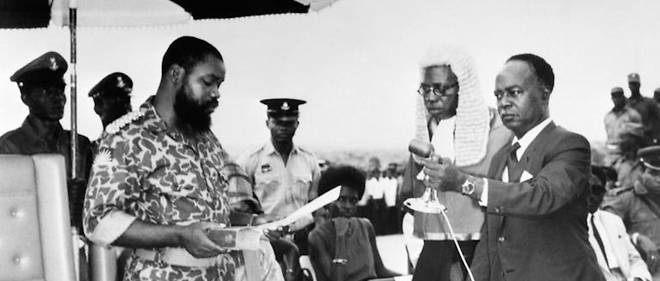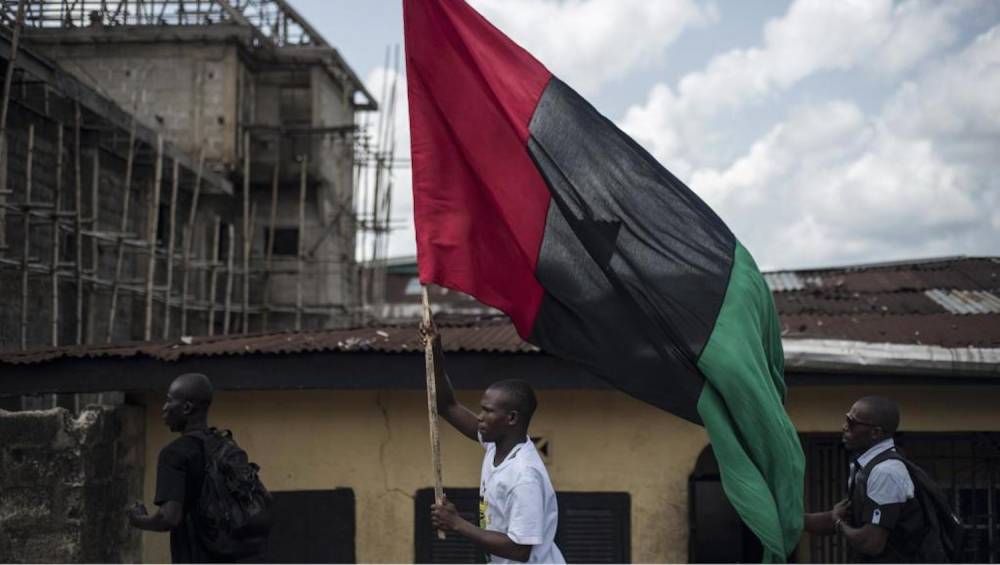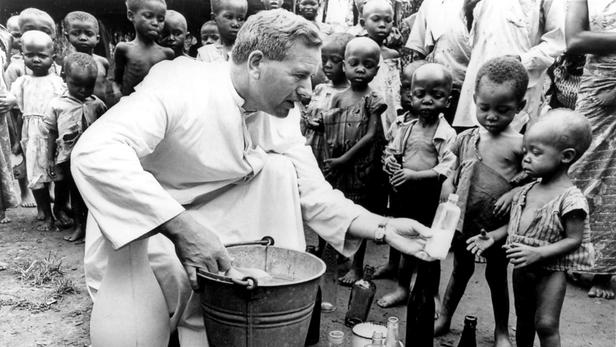On May 30, 1967, the Igbo country, in the south-east of Nigeria, seceded. By January 1970, the civil war had killed more than a million and the “Republic of Biafra” was wiped off the map.

On May 30, 1967, Colonel Ojukwu, a Biafran officer, announces the establishment of the Republic of Biafra.
On May 30, 1967, Colonel Ojukwu, a Biafran officer, announced the establishment of the Republic of Biafra, with Enugu as its capital. To understand this secessionist movement, it must be remembered that this region is that of the Igbo people, who at the time formed about 19% of the population of Nigeria. In addition, this region harbors almost two-thirds of the country’s oil deposits, in other words most of the country’s income. Fifty years later, many fear outbreaks of violence.
Secession of the rich Biafra
On May 30, 1967, the military governor of eastern Nigeria, Odumegwu Ojukwu, proclaimed the “Independent Republic of Biafra”, two days after the decision of the head of state Yakubu Gowon to divide the federation into 12 states, including 3 for the south. -est of Nigeria, the country’s oil reserve.
Biafra, less than 10% of Nigerian territory, then had 14 million inhabitants out of the 55 in the federation. Its population, mostly Christian, is made up of two thirds of Igbos.
Since its independence in 1960, the country had managed to preserve its unity within a federation. But the Igbos felt excluded from socio-political life, and even persecuted by the two other main ethnic groups, the Hausa-Fulani (north) and the Yoruba (south-west).
In January 1966, Nigeria experienced its first coup, led by an Igbo, followed in July by a northerly backlash. Massacres of Igbos take place in the North, and nearly two million Biafrans return to their region. As soon as the proclamation of the “Republic of Biafra” was announced, demonstrations of popular jubilation took place in the secessionist province.

IPOB Activists with the Biafran flag on May 28, 2017 in Aba. © AFP / Stefan Heunis
Air bombardments and blockade
Yakubu Gowon announces the general mobilization and describes the proclamation of the State of Biafra as “an act of rebellion”, which will be “crushed”. Federal military authorities are establishing a blockade against Southeast Nigeria.
The bazooka on the head, a Biafran rebel walks through the bush. Photo taken on July 31, 1968. © AFPThe bazooka on the head, a Biafran rebel walks through the bush. Photo taken on July 31, 1968. © AFP
On July 6, 1967, the army launched a general offensive. The first aviation bombardments begin. In October, the “federal” took Enugu, capital of Biafra, then the port of Calabar. Onitsha and Port Harcourt were taken over in the first months of 1968.
The scope of the conflict goes beyond the country’s borders. Great Britain, the Soviet Union and the Organization of African Unity (OAU, future African Union) allied with the federal government, while only a few African countries and France supported Biafra.
Humanitarian drama
On July 3, 1968, a representative of the Red Cross estimated between 8 million and 12 million the number of people affected by the conflict. According to him, 200 people die of hunger every day in Biafra.
In August, an AFP special envoy said: “You would think that ghosts, thin and silent, parade, draped in their gray rags. (…) Almost all are women and old men. There are not many children in Biafra anymore. The refugees go hungry, fleeing the sound of federal cannons. The vice tightens. ”
At the end of August, he spoke of a million new refugees in two weeks after the advance of the federal troops. “A person dies every quarter of an hour. Refugees are dying of hunger and exhaustion, ”he writes.
The famine will be publicized. The photos of children in distress, of bellies bloated by malnutrition and rickets, are shocking.
A handful of determined French doctors, working for the International Committee of the Red Cross (ICRC), including the future French minister Bernard Kouchner, decide to no longer respect conventions or political borders to intervene on behalf of humanitarian aid. They will create Doctors Without Borders at the end of 1971.

Malnourished children here at Queen Elisabeth Hospital in Umuahia. © Rue des archives
Resentment
In August-September 1968, the army launched a major offensive and took over several cities, including Aba. In March-April 1969, the new Biafran capital, Umuahia, fell into the hands of the army.
After raids by the “rebels” against the oil wells, the “federals” tighten their blockade and then ban the flights of the International Red Cross. Only the Christian churches and the French Red Cross continue their humanitarian flights in increasingly dangerous conditions.
In early January 1970, the federal army launched its last assault.
On January 15, the nightmare ends: the Biafra no longer exists. Ojukwu fled on January 11 to Ivory Coast, and his second, Philip Effiong, formalized the same morning in Lagos the surrender of Biafra to General Gowon, surrender acquired three days ago.
“United Nigeria” is back in place. “No winner or loser,” said General Gowon, who advocates national reconciliation. However, the conflict creates immense resentment between the Southeast and the rest of the country, and will remain a big taboo in collective memory. The East resumes its place in the Federation, but the civil war has given considerable weight to the army, whose coups will punctuate political life until 1999.
source https://www.naijanews.com/2020/01/15/nigeria-the-biafra-war-50-years-ago/





0 Comments